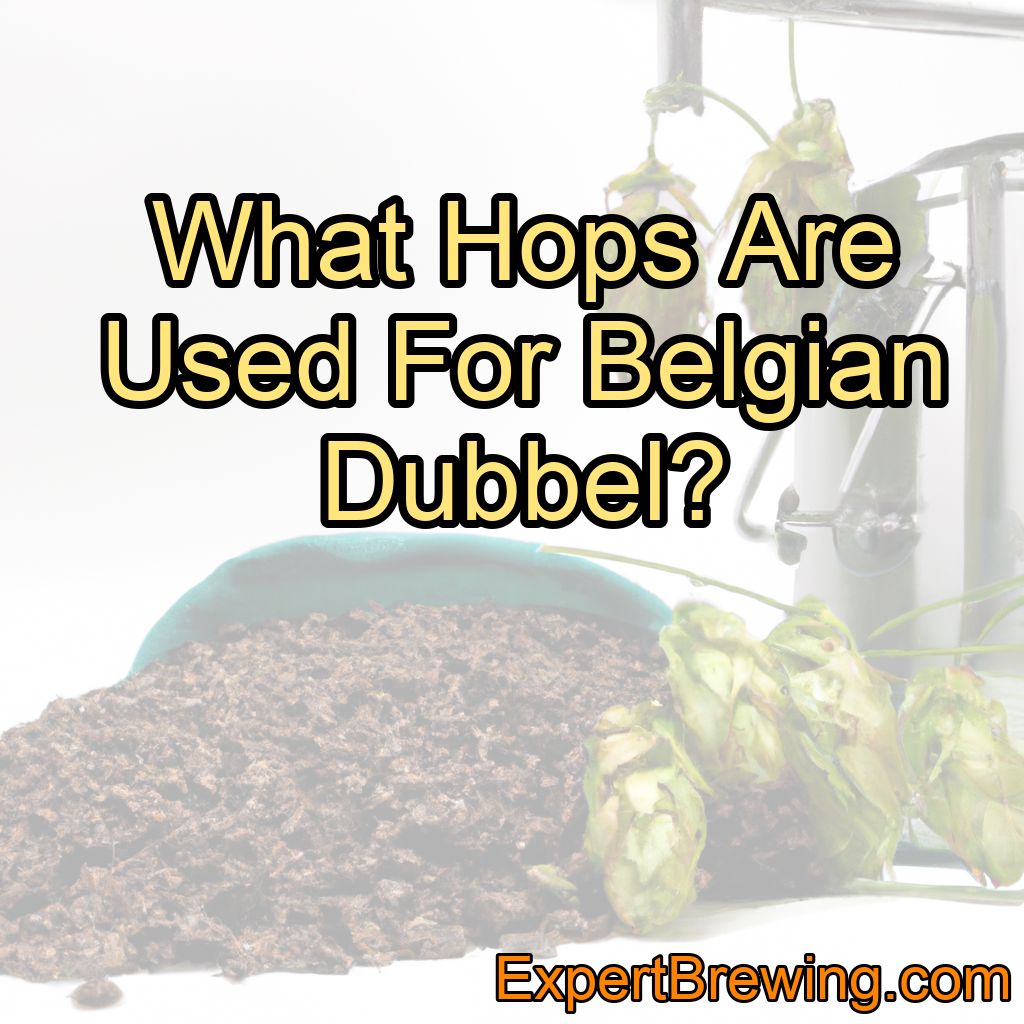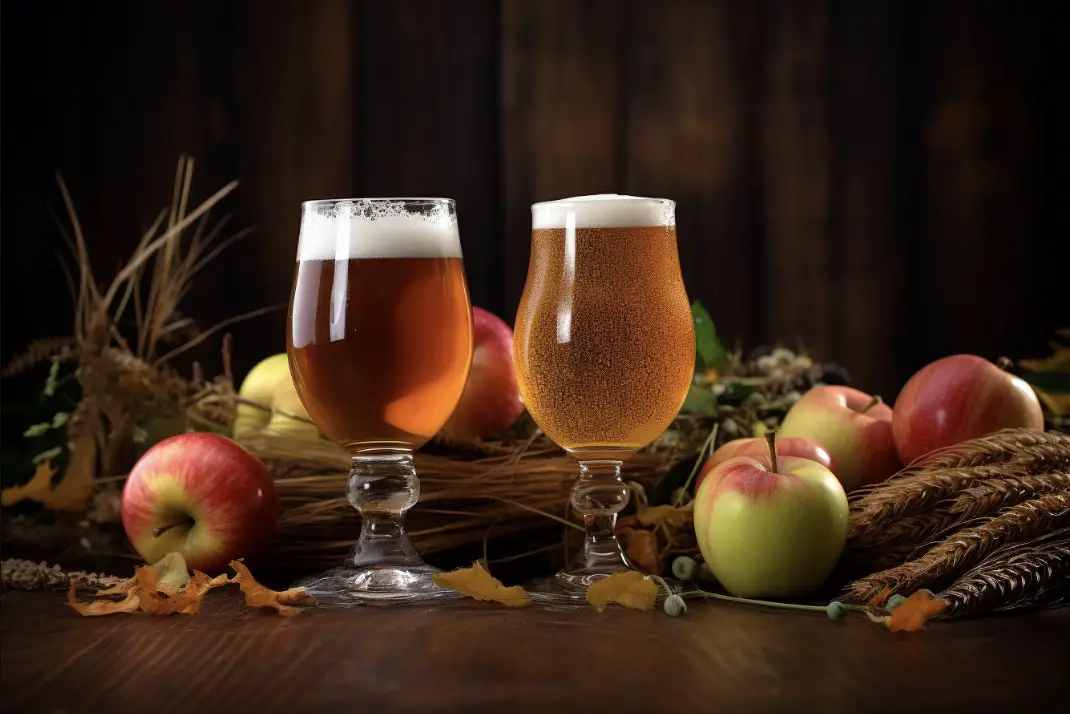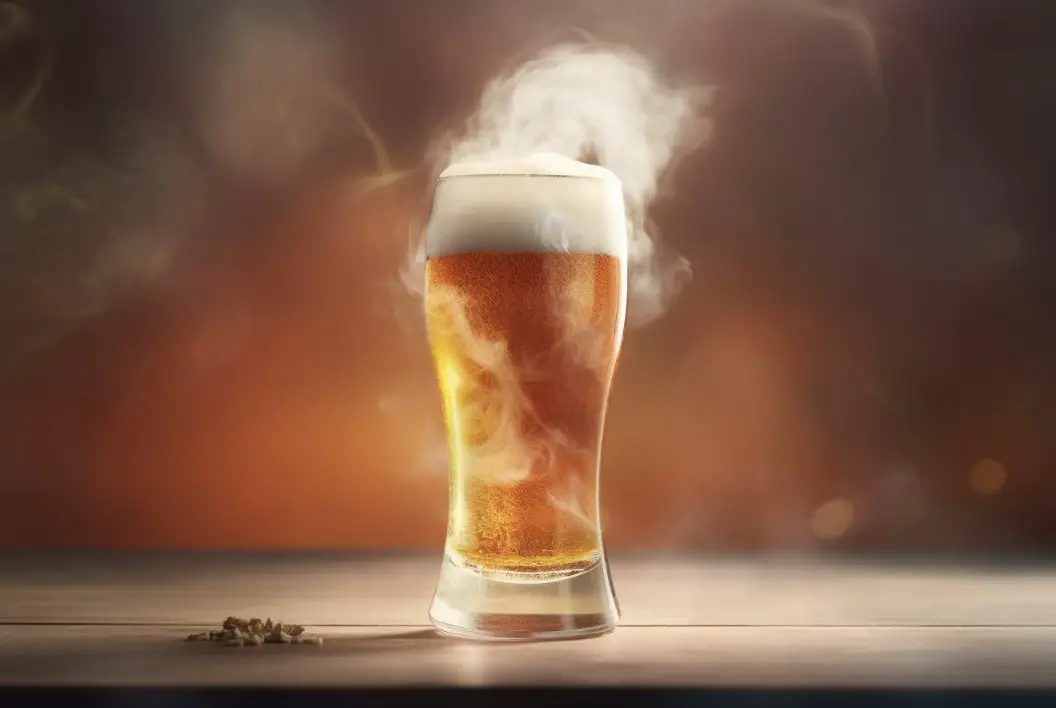The Belgian Dubbel is a style of beer that has been around for centuries, with its roots tracing back to the monastic breweries of medieval Europe. These strong, dark ales are characterized by their rich malt profiles, fruity esters, and spicy phenols, which are derived from the unique yeast strains used in their fermentation. But what about the hops?The most common hops used for Belgian Dubbel are traditional, noble hops such as Saaz, Hallertau, and Styrian Goldings. These hops contribute a mild, earthy bitterness that balances out the sweetness of the malt, while also providing subtle floral and spicy notes that complement the beer’s complex flavor profile.
As a homebrewer and beer enthusiast, I’ve brewed my fair share of Belgian Dubbels and experimented with various hop varieties to achieve the perfect balance of flavors. In this post, I’ll dive deep into the world of hops and explore the different varieties that are suitable for brewing a Belgian Dubbel, as well as discussing the role of hops in this classic beer style.
1. The Role of Hops in Belgian Dubbel
When it comes to brewing a Belgian Dubbel, hops play a supporting role, rather than taking center stage. Unlike hop-forward styles such as IPAs and pale ales, the focus of a Belgian Dubbel is on the malt and yeast-derived flavors, with hops being used primarily for their bitterness and subtle flavor contributions.
In a Belgian Dubbel, the hops should provide a gentle bitterness that balances out the sweetness of the malt, without overpowering the delicate, fruity and spicy flavors produced by the yeast. Additionally, the hop flavors and aromas should complement and enhance the overall complexity of the beer, without drawing attention away from its rich, malty backbone.
2. Traditional Noble Hops
When it comes to selecting hops for a Belgian Dubbel, traditional European noble hops are the most commonly used varieties. These hops are known for their mild bitterness and delicate, nuanced flavors, making them a perfect choice for a beer style that relies on balance and subtlety.
Saaz
Saaz is a classic Czech hop variety that has been used in brewing for centuries. With its low alpha acid content, it provides a gentle bitterness that is perfect for balancing the sweetness of a Belgian Dubbel. The flavor and aroma profile of Saaz is characterized by subtle floral and spicy notes, which complement the yeast-derived flavors in the beer.
Hallertau
Hallertau is a German hop variety that is widely regarded as one of the original noble hops. Like Saaz, it has a low alpha acid content, making it well-suited for providing the mild bitterness required in a Belgian Dubbel. Hallertau hops are known for their earthy, herbal, and floral flavors and aromas, which blend seamlessly with the complex malt and yeast profile of the beer.
Styrian Goldings
Styrian Goldings is a Slovenian hop variety that is often used in Belgian and English-style ales. Despite its name, it is not related to the English Goldings hop, but rather a derivative of the Fuggle hop variety. Styrian Goldings has a slightly higher alpha acid content than Saaz and Hallertau, but still provides a gentle bitterness that is well-suited for a Belgian Dubbel. Its flavor and aroma profile is characterized by earthy, spicy, and floral notes, which enhance the overall complexity of the beer.
3. Alternative Hop Varieties
While traditional noble hops are the most commonly used varieties for Belgian Dubbel, there are several alternative hop varieties that can also work well in this style. These hops can provide a unique twist on the classic flavor profile, while still adhering to the principles of balance and subtlety that define the style.
East Kent Goldings
East Kent Goldings is an English hop variety that is often used in traditional British ales. With its moderate alpha acid content and earthy, floral, and slightly citrusy flavor profile, it can be an interesting alternative to the traditional noble hops for a Belgian Dubbel. The delicate flavors of East Kent Goldings can complement the malt and yeast-derived flavors of the beer without overpowering them.
Fuggle
Fuggle is another English hop variety that can work well in a Belgian Dubbel. Like East Kent Goldings, it has a moderate alpha acid content and a flavor profile that is characterized by earthy, floral, and slightly fruity notes. When used in a Belgian Dubbel, Fuggle can provide a gentle bitterness and subtle flavor enhancement that is in keeping with the style.
Tettnang
Tettnang is a German hop variety that is closely related to the noble hop Hallertau. With its low alpha acid content and subtle, floral and spicy flavor profile, it can be a suitable alternative for a Belgian Dubbel. Tettnang’s gentle bitterness and nuanced flavors can contribute to the overall balance and complexity of the beer, without detracting from the malt and yeast-derived flavors.
4. Hop Scheduling and Quantities
When brewing a Belgian Dubbel, it’s important to consider not only the choice of hop variety, but also the timing and quantity of hop additions during the brewing process. The goal is to achieve the right balance of bitterness, flavor, and aroma from the hops, without overpowering the malt and yeast-derived flavors that define the style.
For the bittering addition, it’s common to use a single hop addition at the beginning of the boil, with a relatively small quantity of hops. This will provide the gentle bitterness needed to balance the sweetness of the malt, without adding too much hop flavor. Typically, you’ll want to aim for a bitterness level of around 20-30 IBUs (International Bittering Units) for a Belgian Dubbel.
For flavor and aroma additions, it’s common to use smaller quantities of hops added later in the boil or during the whirlpool. This will provide subtle hop flavors and aromas that complement the overall flavor profile of the beer, without being too dominant. It’s important to be restrained with these late hop additions, as the focus of a Belgian Dubbel should be on the malt and yeast-derived flavors, rather than the hops.
5. Experimentation and Personal Preference
While the traditional noble hops and their close relatives are the most commonly used varieties for Belgian Dubbel, the world of hops is vast and ever-evolving. With new hop varieties being developed and released all the time, there’s always room for experimentation and innovation in brewing.
As a homebrewer, don’t be afraid to experiment with different hop varieties in your Belgian Dubbel recipes. You might discover a unique flavor combination that sets your beer apart from the rest. Just remember to keep the principles of balance and subtlety in mind, as these are the defining characteristics of the Belgian Dubbel style.
Conclusion
To answer the question of what hops are used for Belgian Dubbel, the most common choices are traditional, noble hops such as Saaz, Hallertau, and Styrian Goldings. These hops contribute a mild, earthy bitterness that balances out the sweetness of the malt, while also providing subtle floral and spicy notes that complement the beer’s complex flavor profile. However, there is always room for experimentation and personal preference, with alternative hop varieties such as East Kent Goldings, Fuggle, and Tettnang also being suitable choices.
Here are 10 facts about hops and Belgian Dubbel to take away from this post:
1. Hops play a supporting role in Belgian Dubbel, providing gentle bitterness and subtle flavor contributions.
2. Traditional noble hops, such as Saaz, Hallertau, and Styrian Goldings, are the most common hop varieties used for Belgian Dubbel.
3. Saaz hops provide a gentle bitterness and subtle floral and spicy flavors.
4. Hallertau hops are known for their earthy, herbal, and floral flavors and aromas.
5. Styrian Goldings offer earthy, spicy, and floral notes in Belgian Dubbel.
6. Alternative hop varieties, such as East Kent Goldings, Fuggle, and Tettnang, can also work well in Belgian Dubbel.
7. Aim for a bitterness level of around 20-30 IBUs for a Belgian Dubbel.
8. Use smaller quantities of hops for flavor and aroma additions to maintain balance and subtlety.
9. Experimentation and personal preference play a role in selecting hop varieties for Belgian Dubbel.
10. The principles of balance and subtlety are key when choosing hops for a Belgian Dubbel.
FAQs
What hops are in Belgian beer?
Belgian beer can use a variety of hops, but some common varieties include Saaz, Styrian Golding, and Hallertau.
What hops are best for Belgian ales?
Belgian ales typically use traditional European hops such as Saaz, Styrian Goldings, and East Kent Goldings, but newer varieties such as Citra and Amarillo can also be used for a modern twist on the style. Ultimately, the choice of hops will depend on the specific flavor profile desired by the brewer.
What is the difference between IPA and Belgian?
IPA (India Pale Ale) is a hop-forward beer style that originated in England and is characterized by its bitterness and citrusy, floral aroma. Belgian beer, on the other hand, encompasses a wide range of styles, including Trappist ales, lambics, and saisons, among others. Belgian beers are known for their complex flavors and aromas, often featuring fruity or spicy notes and a distinctive yeast character. While some Belgian beers may be hoppy, they typically prioritize other flavor elements over bitterness.
What is typically added to a Belgian witbier?
Belgian witbier typically includes ingredients such as coriander, orange peel, and sometimes other spices or herbs.
What hops are used in Belgian witbier?
Belgian witbier typically uses noble hops such as Saaz or Hallertau for a subtle, spicy, and floral aroma, but the hop character is usually not the focus of the style. Instead, the beer is more defined by the use of coriander and orange peel.
What makes a Belgian Dubbel?
A Belgian Dubbel is a dark, malty beer that is characterized by its rich, complex flavors of dark fruit, caramel, and chocolate. It is typically brewed with a combination of specialty malts, including Munich, caramel, and chocolate malts, and is fermented with a Belgian yeast strain that adds spicy and fruity notes to the beer. The use of candi sugar is also common in Belgian Dubbels, which contributes to the beer’s deep color and adds a subtle sweetness to the flavor profile.




